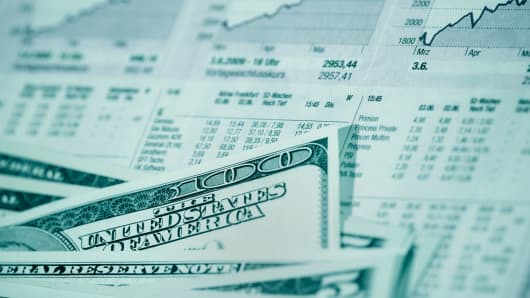United Healthcare is replacing Kraft Foods in the Dow Jones Industrial Average. It’s the first time a pure-play health insurer is in.
Is there a "Curse of the Dow"? It's one of the old chestnuts of Wall Street: Stocks that are added to the Dow industrial average have historically done worse than the stocks that are taken out after the initial pop that the additions get. (Read More: UnitedHealth to Replace Kraft in Dow Industrial Average.)
Well ... maybe. You could certainly cite a couple recent examples to support this theory: Take Cisco Systems, which was added in June 2009, to replace General Motors, which had filed for bankruptcy protection. Since then, Cisco has been down almost 3 percent and notably underperformed many other techs.
Then there's Bank of America, which was added in February 2008, replacing Altria. That was a disaster. Alria has been a fabulous performer since then, up over 50 percent; Bank of America is down 77 percent or so.
Going back a few more years, Microsoft and Intel joined in November 1999. Ouch. That was the height of the tech bubble. They replaced Chevron, which has done well, and Goodyear Tire and Rubber, which has not. A draw here.
You can cite other examples that don't support this theory, as well. The implosion of financials during the credit crisis was a big problem for the Dow industrials. Kraft replaced American International Group in September 2008. That helped the Dow industrials, subsequently: AIG was down 46 percent, Kraft was up about 15 percent.
Travelers replaced Citigroup in June 2009. That, too, has helped the Dow industrials: Travelers is up more than 56 percent since then, while Citigroup has barely moved.
Some have done well independently of the financial crisis. Chevron replaced Honeywell in February 2008. Chevron is now at an historic high, up about 40 percent since, while Honeywell is about 10 percent above where it was in 2008.
Elsewhere:
1) How much more to this rally? Bulls still think the market can expand to a higher multiple from the roughly 13.5 price-to-earnings ratio it currently holds. Why? Aggressive action by European Central Bank President Mario Draghi and U.S. Federal Reserve Chairman Ben Bernanke reduces risk premiums ... at least for the time being. (Read More: Dovish Fed Surprises Markets, but Will Stock Rally Last?)
Thomas Lee at JPMorgan raised his short-term target for the S&P 500 index to 1495 from 1475 ... by election day. Improving housing, accommodative central banks, stabilization in Europe, and investor positioning that was defensive in nature all cited as factors. His message: Stay in cyclicals. By the way, if President Barack Obama wins, Lee thinks markets could drift lower and so he maintains his 1430 price target for the end of the year.
—By CNBC’s Bob Pisani
_____________________________
Bookmark CNBC Data Pages:
_____________________________
Want updates whenever a Trader Talk blog is filed? Follow me on Twitter: twitter.com/BobPisani.
Questions? Comments? tradertalk@cnbc.com



